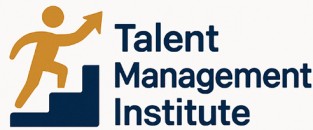
The Role of 360-Degree Feedback in Talent Management
The Importance of Multi-source Insights in Talent Management
In the dynamic arena of talent management, leveraging varied perspectives can significantly bolster an organization's ability to develop robust personnel strategies. 360-degree feedback plays a pivotal role in capturing multi-source insights into employee performance, promoting a well-rounded assessment that incorporates views not just from direct supervisors but also from peers, subordinates, and sometimes even customers. This diversity in perspectives helps build a more comprehensive picture of an individual's strengths and potential areas for improvement. Unlike traditional performance reviews, 360-degree feedback allows for a detailed view that often identifies behavioral patterns and development opportunities not immediately noticeable by a single supervisor alone. The open ended feedback collected from team members and other stakeholders can reveal valuable insights that drive effective development planning and leadership assessment. For organizations looking to optimize this process, there are targeted improvement plans that can be utilized to act on the feedback received, ultimately enhancing employee performance and aligning personal growth with organizational goals. When conducted effectively, this type of performance review can contribute considerably to leadership development, bolster individual performance management, and enhance the overall employee experience. Managers are equipped with actionable data that supports decision-making, from recognizing high-potential talent to determining necessary interventions for underperforming individuals. The degree feedback process, if integrated well, becomes a cornerstone in the elevation of workplace dynamics and success.Crafting Effective 360-Degree Feedback Questions
Key Components for Crafting Thoughtful Feedback Questions
Creating capable 360-degree feedback questions is crucial for acquiring valuable insights about employee performance and fostering development. When designed thoughtfully, these questions help employees, leaders, and managers recognize areas for growth, while building a framework for effective leadership assessment and performance management.- Balance Closed-Ended and Open-Ended Questions: Striking the right balance between closed-ended and open-ended questions ensures comprehensive assessments. Closed-ended questions provide quantifiable data, while open-ended questions encourage detailed responses that provide context and deeper insights into employee strengths and weaknesses.
- Focus on Specific Capabilities: Craft questions that elicit feedback on specific skills and behaviors. By doing this, you allow team members, managers, and leaders to pinpoint areas that require attention, paving the way for targeted development efforts. Consider questions that ask about communication effectiveness, teamwork, problem-solving, and leadership potential.
- Align with Organizational Goals: Tailor feedback questions to align with the organization's strategic objectives. This ensures that individual and team performance are reviewed in light of their contributions to broader company goals. It encourages employees to work in tune with organizational priorities.
- Incorporate Constructive Feedback: Questions should guide respondents to offer constructive feedback. Encouraging team members and direct reports to provide both positive remarks and constructive criticism promotes a culture of continuous improvement and positive employee experience.
- Simplify the Feedback Survey: Ensure questions are clear and straightforward to minimize confusion and encourage completion. A concise and well-structured survey will increase the likelihood of gathering actionable insights and facilitate smoother performance reviews.
Common Pitfalls in 360-Degree Feedback
Common Mistakes to Avoid During the Feedback Process
In the realm of talent management, 360-degree feedback is an effective mechanism for assessing employee performance. However, without careful execution, there are common pitfalls that can undermine its value. Here are some missteps that managers and organizations should be wary of:
- Vague or Leading Questions: Crafting feedback questions is crucial. Avoid vague or leading questions that don't provide clear insights into an individual's performance. Open-ended questions like "How can this employee better collaborate with team members?" are useful, whereas closed-ended questions can limit depth.
- Limited Stakeholder Involvement: A robust feedback survey includes inputs from various levels, such as managers, direct reports, and peers. Restricted involvement may lead to an incomplete performance review.
- Ignoring Anonymity and Confidentiality: To ensure honesty, the anonymity of respondents should be preserved. This encourages team members to provide candid assessments without fear of backlash.
- Failing to Follow up with Action: Gathering 360-degree feedback is only the first step. Implementing findings into development plans and performance management is essential for meaningful change.
- Biased or Non-constructive Feedback: Degree performance reviews can be skewed by biases or non-constructive feedback. To combat this, train employees in best practices for giving feedback, emphasizing balanced perspectives on strengths and weaknesses.
Understanding these pitfalls improves the reliability of your 360-degree assessments and enhances the employee experience, ultimately supporting leadership development. For organizations looking to optimize their feedback process, exploring effective compensation programs is an excellent place to start (explore variable compensation programs).
Integrating 360-Degree Feedback into Performance Reviews
Seamless Integration with Performance Reviews
Incorporating 360-degree feedback into performance reviews is a vital step for enhancing the accuracy and effectiveness of employee assessments. The feedback process provides a comprehensive view that helps assess not only individual performance but also how well an employee fits and contributes to the team dynamics.
When seamlessly woven into performance reviews, 360-degree feedback surveys offer a multidimensional perspective of an employee's strengths and weaknesses. This expanded view assists managers in crafting a more rounded and balanced performance assessment. Key team members, direct reports, and managers are all able to provide input, ensuring a more complete picture is captured.
Here’s how integrating this feedback can enhance performance management:
- Diverse Input: Employees receive evaluations from multiple angles, encompassing direct reports, peers, and leadership. This variety fosters a rich feedback matrix.
- Open-Ended Insights: Open-ended questions in the feedback survey facilitate in-depth responses that reveal deeper insights into employee performance, best practices, and areas for potential development.
- Constructive Feedback: With closed-ended and open-ended questions, feedback becomes more structured, actionable, and conducive to personal growth and leadership development.
- Objective Reviews: By using diverse feedback, there’s less reliance on a manager’s singular view, ensuring more equitable and comprehensive performance reviews.
- Continuous Improvement: Providing direct reports and team members a voice establishes a culture of continuous feedback, promoting an employee experience focused on ongoing development and performance improvement.
Through these elements, 360-degree feedback transforms performance reviews from a mere annual task into a powerful tool for development. It aligns individual performance with organizational goals, fostering a culture of open communication and continuous learning.
Ensuring Anonymity and Confidentiality in Feedback
Upholding Confidentiality to Foster Trust
When conducting a 360-degree feedback assessment, ensuring the anonymity and confidentiality of responses is paramount. Without these assurances, employees might be hesitant to provide honest, constructive feedback, ultimately skewing the results and diminishing the value of the feedback process. By safeguarding the identity of respondents, you encourage open-ended feedback, which is essential for identifying both the strengths and weaknesses in individual and team performance.Implementing Best Practices for Secure Feedback
To maintain confidentiality, consider adopting the following best practices:- Use third-party platforms for feedback surveys. These neutral tools can help prevent potential biases and reassure your team members that their responses will remain private.
- Aggregate feedback data. When sharing survey results, present only aggregated data, avoiding the disclosure of direct quotes or specific individual responses. This approach helps maintain anonymity while still offering valuable insights for leadership assessments.
- Limit access to raw data. Ensure that only a select group of managers or HR professionals can view detailed responses, further preserving confidentiality.
The Role of Anonymity in Leadership Development
Anonymity in feedback doesn't just protect employees; it also plays a critical role in developing leadership. By ensuring ratings and remarks remain confidential, leaders can gain more accurate assessments from a broader degree of feedback sources, including their direct reports. This allows leaders to better understand their personal development areas, prepare for constructive performance reviews, and engage in more effective performance management strategies. For effective 360-degree feedback to work well, fostering a trusted environment is essential. When employees feel secure, they'll be more inclined to fill out surveys with honest perspectives, enhancing the overall employee experience and contributing to meaningful leadership development.Leveraging Feedback for Leadership Development
Utilizing Feedback to Cultivate Leadership Potential
Incorporating the results of 360-degree feedback surveys into leadership development strategies can significantly enhance both individual and team performance. When employees engage in a comprehensive feedback process, they gain insights into their strengths and weaknesses. This self-awareness is crucial for leadership growth, ultimately contributing to the organization's overall success. To effectively use feedback for developing leadership skills, consider these strategies:- Identify Patterns: Analyze feedback to spot recurring themes in leadership behavior. Pay particular attention to both constructive feedback and the feedback questions that reveal areas for improvement. Patterns may emerge, indicating where developmental efforts should be focused.
- Tailor Development Programs: Craft leadership development programs tailored to the specific needs highlighted in the feedback process. Not every feedback review will call for the same set of skills, so it's essential to customize training to align with individual and team needs.
- Set Achievable Goals: Collaborate with employees and their managers to create achievable goals based on feedback. Establishing clear objectives ensures that employees can track progress and remain motivated to address their developmental needs.
- Encourage Follow-Up: Regularly schedule check-ins or performance reviews to assess progress. These follow-ups not only demonstrate commitment to growth but also allow for adjustments in development plans as needed.
- Promote Peer Learning: Encourage team members to learn from one another. Sharing feedback and best practices among peers can inspire new approaches to leadership challenges.












